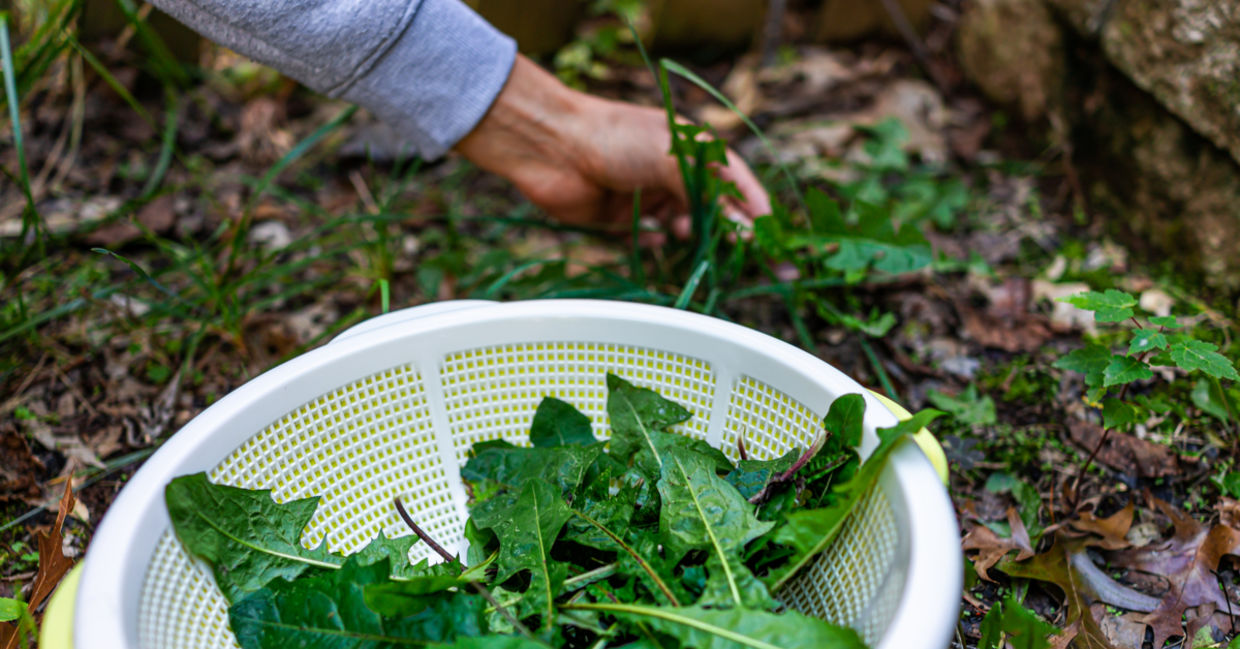
(Kristi Blokhin / Shutterstock.com)
With families tending to stay closer to home this summer, they have a unique opportunity to explore their neighborhood. The outdoors welcomes everyone at all hours and is free! Consider taking an urban foraging walk down your street – you’ll be surprised by the delicious and nutritious produce you can find.
Although urban foraging is becoming a more popular trend, its origins go way back to a time when humans were hunter gatherers, finding their sustenance in tubers, seeds, leaves, nuts, and fruit. Wild plants and herbs have also been prized for their medicinal benefits and, over generations, have been collected to be used in salves, infusions, tinctures, essential oils, and teas.
Using guidebooks to identify wild edibles and apps that map out what is ripe and where it can be found, foraging is much easier today. Another important takeaway for city folk is that food can be sourced in places other more than the grocery store!
Foraging is also a great opportunity for families to reconnect with nature, learn the names and properties of edible plants and then prepare them for a fine dining experience. Chefs are also excited by this concept, with many fine restaurants offering dishes prepared from locally-sourced ingredients.
From an environmental angle, eating locally is low impact: when food is picked right off the tree in your neighborhood, there is no food packaging and no pollution created transporting produce from farm to store. The food you harvest on your urban foraging walk is fresh, organic, packed with vitamins and minerals, and it’s free!
Other than having a zest to learn and be outdoors, you will need a few tips to get started. First, you need to learn how to make a positive plant identification. Some wild plants have look-alikes that are inedible, so do some research before you head out.
There are many books to help you identify the wild plants in your area or you can download a plant app. There are also foraging courses you can take as well as local experts who can accompany you on your first guided walk.
Be careful not to pick from roadsides where exhaust fumes coat the plants. You should also look into whether your city uses pesticides. Another consideration before heading out is to check if there are ordinances prohibiting foraging in your city’s parks or if any species in your area are protected.
When you pick, be careful to take only a few berries or flowerheads from each plant; leave some for birds, insects, animals, and other foragers – and ensure the plant is left with seeds to propagate. If you are digging for roots and tubers, leave some undisturbed and then clean up the area where you have been foraging.
As you get to know the plants, take photographs and write down the exact locations and dates you saw them. There are also organizations, such as Falling Fruit, which pinpoint locations of edible plants in cities and towns all over the world. To date, they have over 2,700 types of edibles listed from over a million locations – and people are adding more each day.
Each plant, tree and herb has its own season. Spring is a bountiful time for foragers; tender sprouts, densely packed with nutrition, are poking out everywhere, while younger leaves are more tender and juicy. As spring turns to late summer, fruit ripens and roots mature.
The foraging bounty in the US is so varied, according to National Geographic, you can find loquats and kumquats in California, mulberries in Pennsylvania, while apples, plums and pears are ripe in Wisconsin.
Professional forager Wross Lawrence writes in National Geographic that he loves to comb the streets, parks, and waterways of London, England. His finds often include elderflower, acorns, walnuts, sloe berries, wild mushrooms, hops, nettle, blackberry, and rosehip.
Urban foraging offers an incredible opportunity to spend quality time outdoors, appreciate your hometown and educate the family. Engendering an esteem for nature starts at a young age; bringing children along enables them to have a deep respect toward nature that can last a lifetime.
YOU MIGHT ALSO LIKE:
Chalked Names of Wildflowers Showcase Nature in the Big City
5 Must-Know Herbs for Healing and Well-Being
10 Unexpected Benefits of Spending Time in Nature







